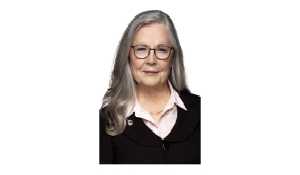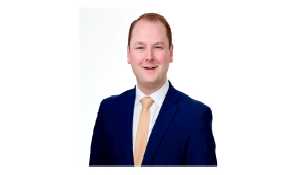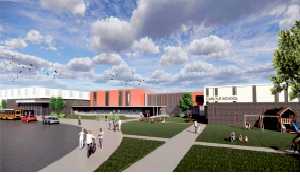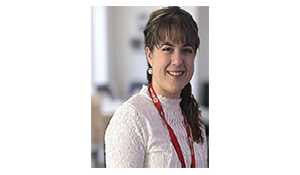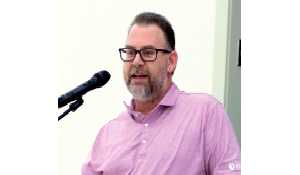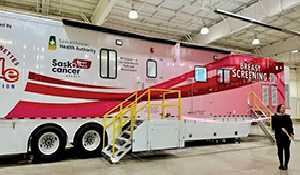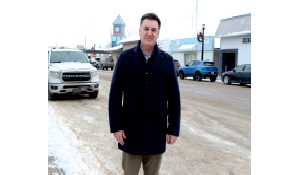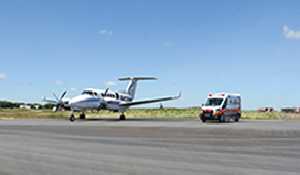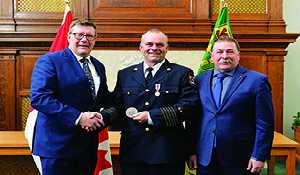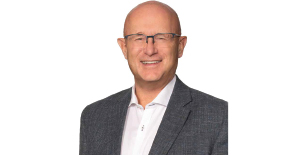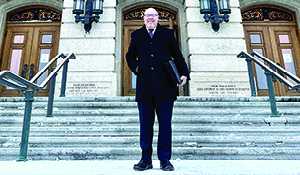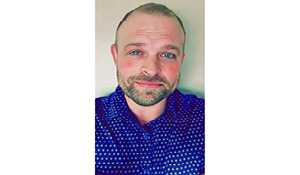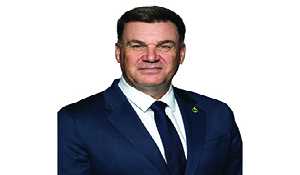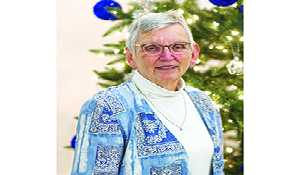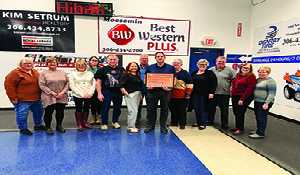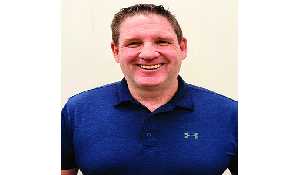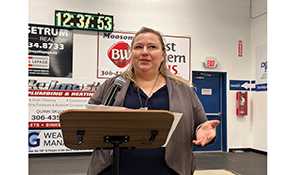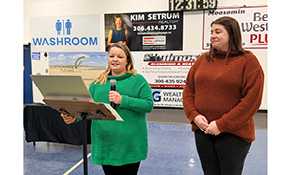Medical residency program in Moosomin will have second resident this summer
April 27, 2023, 2:09 pm
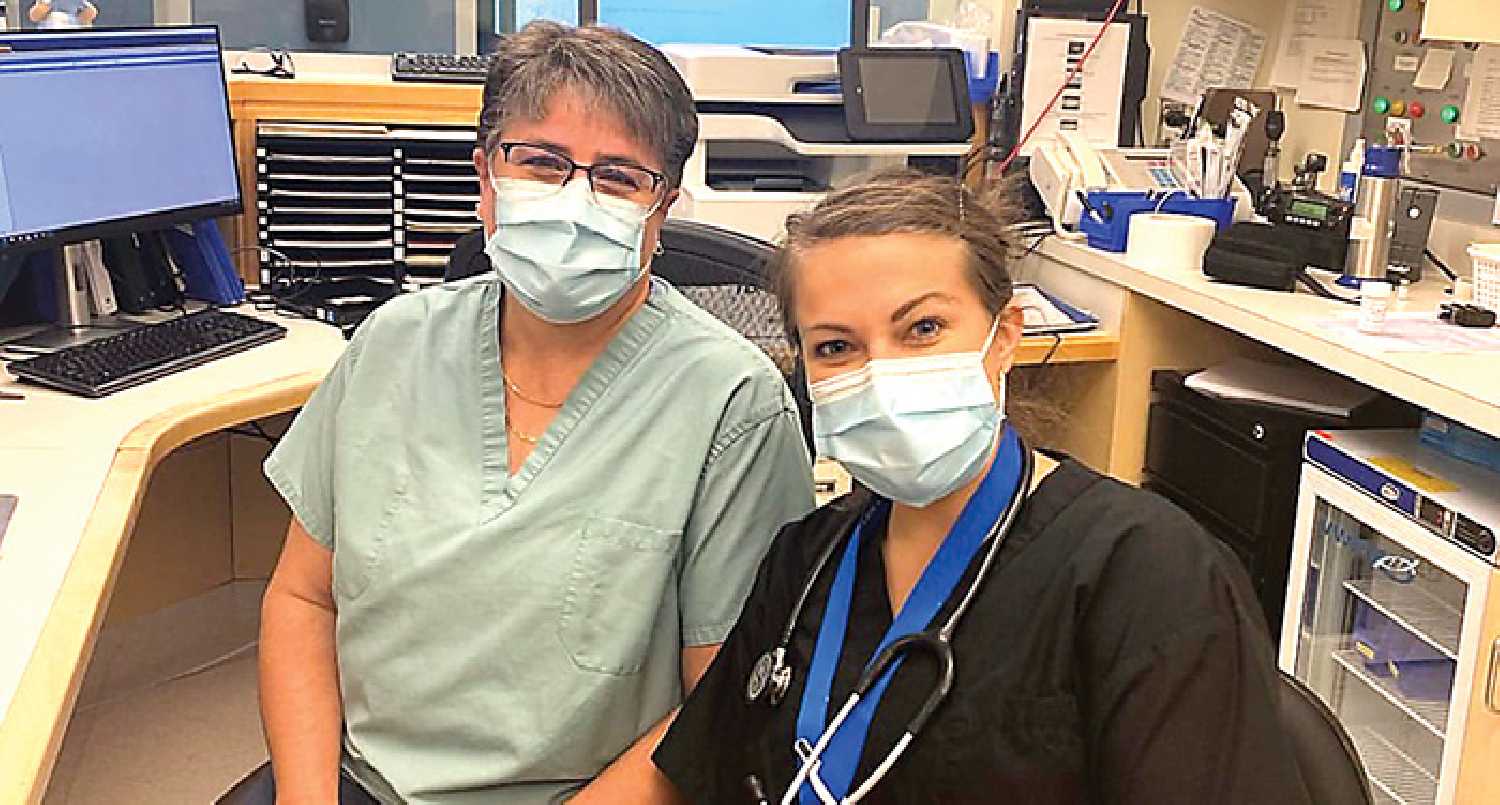

Moosomin will welcome its second medical resident—Dr. Stephanie Asence—to the community this July as part of Saskatchewan’s Family Residency Training Program.
The hosting of medical residents in Moosomin is an extension of the province’s medical residency program which includes programs in Regina, Moose Jaw, Swift Current, North Battleford, Prince Albert and La Ronge.
“We matched with Dr. Stephanie Asence. She did her schooling in the Philippines, she’s from there originally, and currently lives in Winnipeg,” said Dr. Kristin Foy of Moosomin.
Last summer, medical resident Dr. Cara Fallis started her residency in Moosomin and was one of the four residents placed in southeast Saskatchewan, in addition to three other residents located in Weyburn and Humboldt.
Foy spoke about how the residency program has been going this past year with Dr. Fallis.
“It’s been going really well. Dr. Fallis has been well received into the community, she’s a valued member of our team at this point,” Foy said.
“It’s been an excellent experience so far. There’s been some challenges, it is a new program so I can’t say things are 100 per cent perfect. We’ve had to take it as it goes and take feedback to change things as needed.
“Overall I would say it’s going how I envisioned for it to go.”
In addition to the one resident coming to Moosomin this year, there will be two residents going to Weyburn and one going to Humboldt, bringing in a total of eight first and second year medical residents in the southeast region.
Foy explained what the process was for Moosomin being selected as one of the hosting communities in the southeast area.
“Dr. Erika Roets and myself were contacted from the University of Saskatchewan College and Medicine about trying to put together a residency program in the southeast area of Saskatchewan,” she said.
“Not necessarily in Moosomin itself, but whether that would work or not. We looked at feasibility of the various communities in the southeast. That took into account a lot of different factors.
“One of the big factors is physicians, and making sure there’s a good physician complement in the communities. As well as looking at the types of medical care provided in those communities, and whether if the community seemed like a good fit to be able to host residents.
“We felt that Moosomin would be one, and alongside that we also have Weyburn and Humboldt acting as host communities as well.
“Moosomin is certainly on the smaller side for a residency program, and it is also why we have to utilize Yorkton for some of our speciality rotations. As well, we’ll be using Regina for our second year rotations, just to get that extra experience in practice areas that we just don’t have the volume of here.”
Having medical residents complete their residency in a small community such as Moosomin has many benefits, Foy said.
“In these small towns, Moosomin, Weyburn, Humboldt, we provide a full scope of family practice,” she said.
“There’s a lot of stuff that we do, especially in Moosomin, we’re fairly far from the cities and we try to look after what we can locally here rather than just send everything to a specialist.
“I think it provides a really good learning opportunity for the residents to be able to come here and gain all of the different skills and knowledge that we have.”
Process of matching medical residents to communities
Foy explained how about the matching process for pairing medical residents within a community works through the Canadian Resident Matching Service (CaRMS).
“There’s a huge national matching process called CaRMS. It is the process in which all medical students in Canada, as well as international medical graduates, place their applications for places they may want to do residency, and that’s for both family medicine and specialists across Canada,” she said.
“In December we review the applications we’ve gotten and it’s a team process. The whole Saskatchewan Family Medicine Residency Program reviews the applications together. We get hundreds of applications and we decide who we want to interview.
“Then we have a provincial interviewing process where we have physicians from each of the residency sites across the program. From there we rank the applicants, and then CaRMS’s centralized process takes care of matching people to the places they want to go, and look at who we want.
“Then there’s a match day in March where we find out who we matched with. The University of Saskatchewan Family Medicine residency program was very fortunate this year to match all of our seats in the first round, which I don’t know that any other university did.”
Foy was asked why she thinks medical residents apply to complete their training in rural communities.
“I think people who want to train rural in family medicine are attracted to the idea of coming to a smaller community, and really getting that rural training experience,” said Foy.
“I think that’s something we offer here in Moosomin. The University of Saskatchewan, in general, I think has a good reputation in their family medicine programs, especially their rural family medicine programs.
“Even though we are a new site I think applicants are seeing that we have the potential to train them to be the types of doctors that they want to be.”
Medical resident Dr. Cara Fallis happy with program
As part of Saskatchewan’s medical residency program, Dr. Cara Fallis came to Moosomin in July 2022 as the community’s first medical resident.
With her first year of residency almost being completed in Moosomin, Fallis spoke about what her experience has been like practicing family medicine in the area.
“I am feeling really grateful for the experience I have gained so far. The practice environment in Moosomin is very collegial and I have been able to polish my clinical approach and skills in many areas,” said Fallis.
“The learning curve was really steep at the beginning, mostly due to having to grasp so many new systems and processes of medical practice in Saskatchewan, and then also all the new people and names of specialists that are known locally.
“Fortunately, everyone involved, including patients, have been patient and welcoming, so it was easy for me to adjust. Dr. Van and his family invited my family and I to dinner a couple times— these gestures have made me feel at home in Moosomin. The nurses have invited me to group workout classes and team bonding activities too.
“Particular interests for me to gain competence in are women’s health and basic procedures. Working with Dr. Erika, Dr. Crouse, and Dr. Kerkhoff at the outpatient department at the hospital has afforded me a wealth of these opportunities, and I am becoming more independent with these skills. I am also interested in mental health and have found there has been a lot of opportunity to learn and discuss with Dr. Theathi who excels in this area.
“In the late fall and early new year, I traveled to Yorkton for specialty rotations in mental health, obstetrics, anesthesia, surgery, and pediatrics. I was able to develop relationships with many of the colleagues that we often refer patients to, and observe their approach to managing cases in these specialties.
“At this point, Moosomin’s obstetrics volumes are fairly low, it was really valuable to be hands-on in a repetitive fashion, and to get feedback from physicians outside of home base.
“As I come towards the half-way point of the program, it has been exciting to develop some increasing independence. I am also benefitting from more consistency with the days I will work at certain locations, like Wednesdays in Whitewood with Dr. Roets.
“I’m sure Dr. Foy would agree that there have been some challenges associated with being a brand new residency site, but she has been incredibly receptive to feedback from all of us—we are four residents in the first year cohort, spread out across Moosomin, Weyburn, and Humboldt.
“Dr. Foy has put together a lot of high-impact exam prep and other practical transition to practice lectures for our academic half-days, and has incorporated topics based on suggestions or requests of residents to ensure that our career interests are being met.”
Fallis was asked if there are any differences from doing her residency in a rural community compared to completing it in the city.
“This is tough for me to fairly comment on since I have no residency experience in a city to compare to,” she said.
“During my time in cities as a medical student, the most obvious difference is that I would never see any patient outside of the hospital, whereas here it is daily that you are able to develop rapport with patients by saying hello on the street, or passing them at Tim Hortons or Red Barn. I think this helps facilitate trust between patients and doctors.
“Another big difference is longitudinal exposure to inpatient and emergency medicine that rural medicine offers.
“Last one I can think of without adding too much bias, would be access to investigations and imaging. CT is a big one.”
Based on her experience in southeast Saskatchewan, Fallis said she would recommend other residents to do their residency in a rural setting.
“Everyone considering family medicine should consider doing their residency in a rural site, in my opinion,” said Fallis.
“Rural training has set me up to be very prepared to adapt to a massive variety of health and social situations, as well as logistical navigation of the health system. Being far away from specialists really places a lot of demand on a family doctor’s medical knowledge.
“In two years, I’m sure I won’t have seen everything there is to see, but our clinical training in combination with the academic curriculum and simulation training makes me confident that I will be as prepared as possible.
“Rural sites will allow the resident to be the first in line for any learning opportunity, compared to other settings where there are a lot of other residents that have to share the learning, and it is common for senior residents to take priority over first-year learners.
“That said, there is also no one to hide behind, you really have to know your stuff and learn quickly on how to navigate the answers to the things you don’t.”
Fallis said her experience living in Moosomin has been great.
“The community has such a variety of things to do, especially if you enjoy being active,” she said.
“My family has been able to adjust well and my son is thriving in the school and day care here. The generosity of folks feels like no other place I have lived.
“My husband has been able to get involved with community basketball which is his passion, and there seems to be some community interest in growing that sport, which is exciting for us.
“I have enjoyed the chance to attend a couple of small theater productions in Moosomin and surrounding area, and they have been fantastic.
“I would be amiss not to mention that it is so great to be able to buy and eat food produced by people you know personally, and Moosomin has allowed for that too.”
After her residency is completed, Fallis said she plans to stay in the community for an additional two years to complete her return of service.
“My family and I have decided that we would like to stay in Moosomin for my return of service to Saskatchewan for sure, which is two years after residency finishes,” she said.
“After that, it is really tough to say at this point! We have moved a lot, for right now it just feels very nice to be putting down some roots.”
Moosomin Health Foundation says residency program has been a great addition to the community
Larry Tomlinson of the Moosomin & District Health Care Foundation spoke about what the foundation’s role is in regards to Moosomin being a host community for the residency program.
“The Health Care Foundation is there just to help. It was initially mainly for equipment, but then we put a retention fund into place with money from all of the municipalities around,” said Tomlinson.
“It was meant to help attract doctors through housing, or whatever else we can do as help for the doctors and to attract other doctors to come here.
“We’ve done some of that with housing and other stuff. In one case, Dr. Fallis had a car problem and we found a car for her and got her out of a bind with a lot help from within the community.
“Our role is to mainly help and do whatever we can for the doctors, to let them help attract other ones into the system.”
One of the benefits of having the residency program in Moosomin is being able to attract more doctors to the community, said Tomlinson.
“Like Dr. Foy says, the program gives us more doctors and hopefully eventually it will keep some of them here on a permanent basis,” he said.
“That’s what the foundation’s long term goal is, to help the whole situation, and our population is growing so it is a necessity.”
Foy said the foundation has helped tremendously for finding housing for medical residents who come to Moosomin as part of their rotation in the province’s Family Residency Training Program.
What draws people to Moosomin?
Foy spoke about what she thinks draws residents to choose Moosomin as their site for medical residency.
“When we did the feasibility we looked at a few factors, but I think one of the main ones is the physician complement,” said Foy.
“Moosomin has a number of family physicians who have been here for a while. They practice quite full scope family medicine, and importantly as well, they have their CFPC Examination which is the national certifying exam.
“You need to have those things in order to have residents with you and, to continue to supervise them for long periods of time. If you’re a smaller community and you don’t have enough supervisors, you can’t make it happen.”
She was asked if it will be difficult hosting two medical residents at the same time in Moosomin.
“I think it will be nice that at least the incoming resident will have a second year present. Cara can kind of take her under her wing and show her the ropes as well,” Foy said.
“It certainly does mean we need to fit more supervision time into our schedules, but because our residents do go to Yorkton and Regina, they also have time for electives, we don’t have them here 100 per cent of the time.
“There are times where they will both be in the community and then there will be times where there’s just one of them in the community.”
The medical residency program will most likely continue permanently in Moosomin, said Foy.
“Hopefully it is here to stay. We need to continue to have a good physician compliment,” she said.
“We need to be able to support it, but I think hopefully by having a residency program it will promote recruitment and retention, which will then mean we can continue along.”
Foy and Tomlinson shared how they think Moosomin being one of the hosting communities for the program will benefit in the long run.
“From my perspective, for myself I think it provides some sense of professional fulfillment. Not that being a doctor in itself doesn’t have fulfilment, but it is a different way to spend my day,” said Foy.
“I think it’s rewarding for us physicians to be able to provide our knowledge to the up-and-coming physicians.
“Then of course, looking ahead to hopefully recruiting and retaining some of these physicians as well. I think that’s going to be—hopefully—a big benefit to the program.”
Tomlinson added how it will help the town.
“I think for the town, and surrounding area, with all of the municipalities who have got behind it and helped us with what we had to do to get these doctors here for housing and everything else that was needed to bring them here,” said Tomlinson.
“Hopefully, like Dr. Foy says, maybe we’ll attract a few out of them from this program to stay here.
“We’ll do what we can and compliment what we have for doctors, which we’re very lucky to have what we do have.
“We do have very good doctors and quite a few of them, and the way the community and surrounding area is growing, we’re going to need them.
“I think the program can do nothing, but help.”
